Abstract
Multiple myeloma is a hematologic neoplasm with a unique and characteristic manifestation. This condition is responsible for 10% of hematologic malignancies, and thus represents 1% of all cases of cancer in the US. In Korea, unlike in Western society, myeloma has classically been relatively rare, due in part to racial differences. However, the incidence of this disease in Korea has increased steadily over the last 25 years. During this period, both the incidence of and mortality due to myeloma increased by up to 30-fold. Currently, incidence rate and mortality rate exceed 1.0/100,000. Possible reasons for this increase include better detection, as well as an actual increase, probably attributable to contributing factors, including pollution, exposure to chemicals, and socioeconomic change, all of which are related to rapid industrialization. Aging is another important factor contributing to this perceived increase. With the advent of targeted therapy, Korean myeloma study group was organized under the auspice of Korean society of hematology. In addition, Korean myeloma registry was established recently. In this study, epidemiological changes in the incidence and mortality of multiple myeloma in Korea are assessed and compared with the situations of the US and Japan. This article also claims the need for multicenter clinical trials as well as activation of basic researches in myeloma.
REFERENCES
1). Tricot G. Multiple myeloma and other plasma cell disorders. Hoffman R, editor. Hematology. Basic principles and practice. 3rd ed.Philadelphia: Churchill Livingstone;2000. p. 1398–416.
2). Bergsagel PL. Epidemiology, etiology, and molecular pathogenesis. Richardson PG, Anderson KC, editors. Multiple myeloma. 1st ed.Chicago: Remedica;2004. p. 1–24.
3). Ries LAG., Eisner MP., Kosary CL., Hankey BF., Miller BA., Clegg L., Mariotto A., Feuer EJ., Edwards BK. SEER Cancer Statistics Review, 1975-2002, National Cancer Institute, Bethesda, MD. http://seer.cancer.gov/csr/1975_2002/. based on November 2004 SEER data submission, posted to the SEER web site. 2005.
4). International Agency for Research on Cancer (IARC) statistics. Worldwide Cancer Incidence Statistics. http://jncicancerspectrum.oupjournals.org/cgi/statContent/cspectfstat;110.
5). Ajiki W., Tsukuma H., Oshima A. Research Group for Population-based Cancer Registration in Japan. Cancer incidence and incidence rates in Japan in 1999: estimates based on data from 11 population-based cancer registries. Jpn J Clin Oncol. 2004. 34:352–6.
6). Lee H., Lee M. A case of α2- plasmacytoma. New Medical Journal. 1959. 2:1113–7.
7). Kang DY., Lee DI., Kim KH, et al. Statistical studies on multiple myeloma in Korea-preliminary report. Korean J Hematol. 1972. 7:31–40.
8). Yang SH., Kim TY., Kim BK, et al. A statistical study of multiple myeloma in Korea. Korean J Hematol. 1995. 30:345–61.
9). Annual Report of the Korea Central Cancer Registry (Based on Registered Data from 139 Hospitals) Korea Central Cancer Registry, Ministry of Health and Welfare Republic of Korea. (2002 1 ∼. 2002. 12). http://www.ncc.re.kr/.
10). Korean Health Insurance Review Agency. 2004 Health Insurance Review and Evaluation Statistical Yearbook. http://www.hira.or.kr/.
11). Lee SI., Ko YW., Hahn JS., Kim KS., Chai ES. A clinical study on multiple myeloma. Korean J Intern Med. 1976. 19:208–17.
12). Song HH., Lee JH., Park JB, et al. Prognostic factors affecting response to chemotherapy and survival duration in Korean patients with multiple myeloma. Korean J Intern Med. 2000. 58:83–90.
13). Annual report on the cause of death statistics, National Statistics Office, Korea. http://www.nso.go.kr.
14). Bang SM., Cho EK., Suh C, et al. High dose therapy followed by autologous peripheral blood stem cell transplantation as a first line treatment for multiple myeloma: a Korean Multicenter Study. J Korean Med Sci. 2003. 18:673–8.

15). Bang SM., Lee JH., Yoon SS, et al. Preliminary report of risk-based approach in Korean patients with newly diagnosed multiple myeloma. Blood. 2004. 104:310b.

16). Bang SM., Lee JH., Yoon SS, et al. A multicenter retrospective analysis of adverse events in Korean patients using bortezomib for multiple myeloma. Int J Hematol. 2006. 83:309–13.

Fig. 1
The relative incidence of myeloma among the hematologic malignancies (myeloproliferative diseases and myelodyspla-stic syndromes are excluded). In US (A), multiple myeloma is the second common hematologic malignancy, which proportion was 14% in SEER (1998~2002). In Korea (B), the proportion of myeloma was 10%, ranked as 4th in national cancer registry (2002).
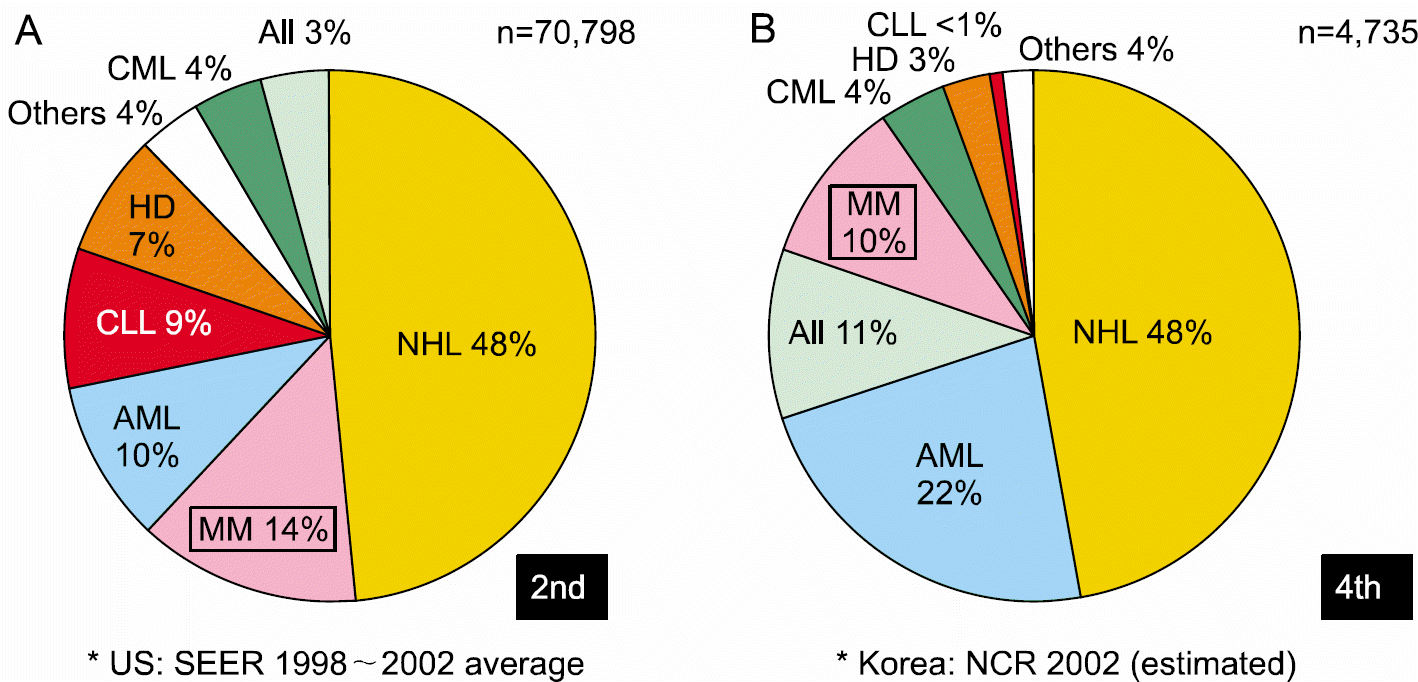
Fig. 2
The changes in incidence of multiple myeloma in Korea during the past 22 years. The red bars indicate the incidence between 1981 and 1990 according to the retrospective data of Yang et al.8) The blue bars indicate the incidence from 1998 till 2002 in national cancer registry. The pink bars represent the incidence of myeloma during 3 years (1999~2001) according to the report of Korean Ministry of Health and Welfare.
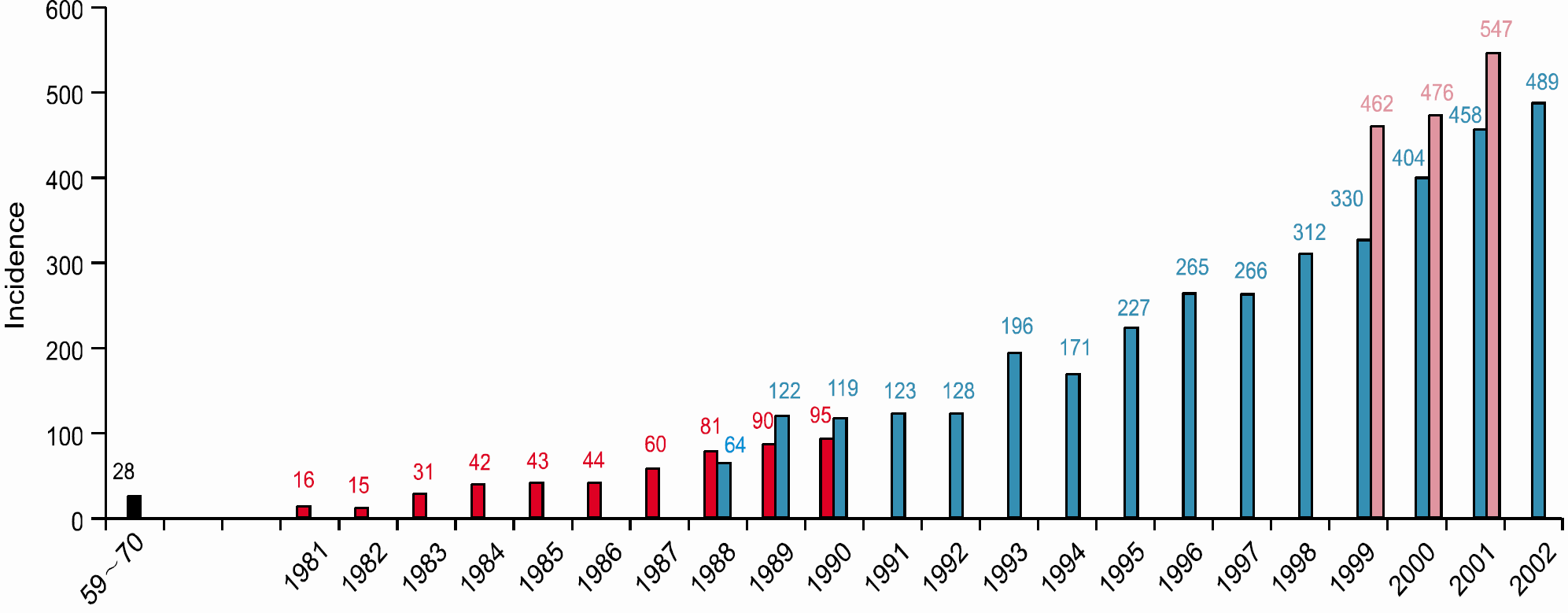
Fig. 3
The incidence change of total cancer in Korea during the past 22 years. The black bars indicate the incidence from 1998 till 2002 in national cancer registry. The pink bars represent the incidence of myeloma during 3 years (1999~2001) according to the report of Korean Ministry of Health and Welfare.
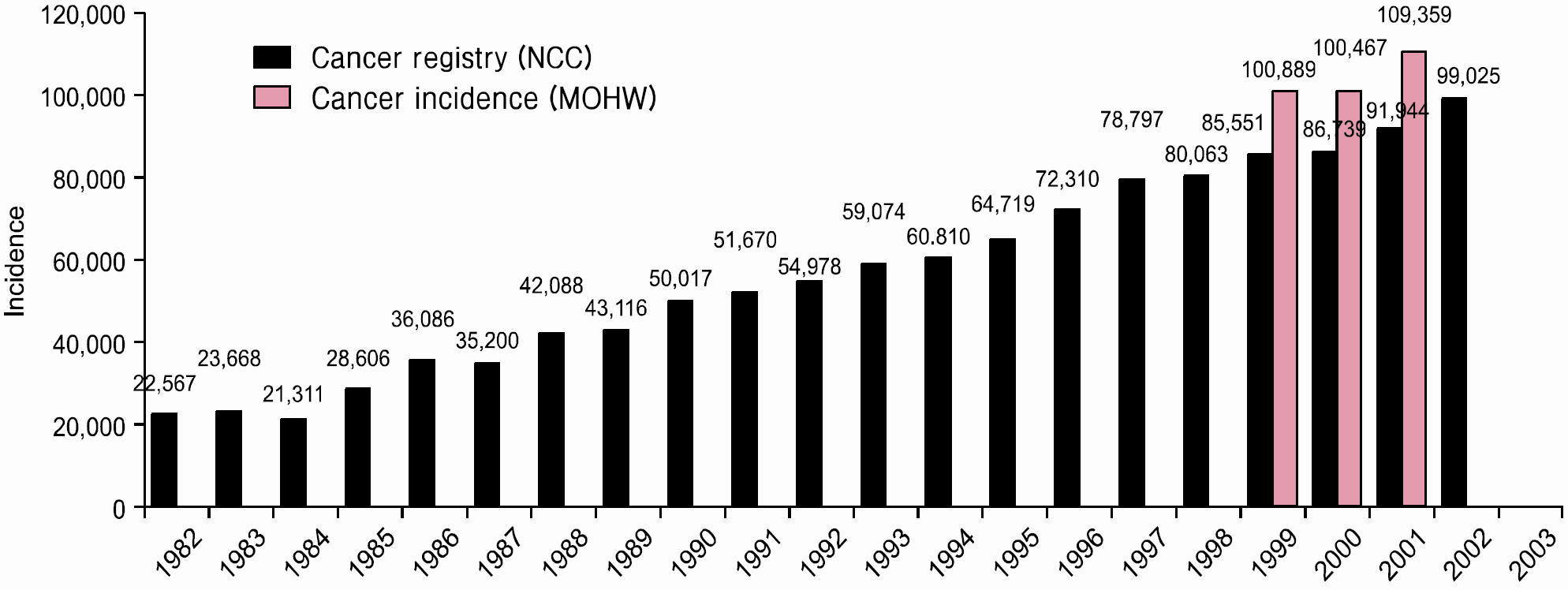
Fig. 4
Recent prevalence of multiple myeloma in Korea. Data from Korean Health Insurance Review Agency (2001~ 2004).
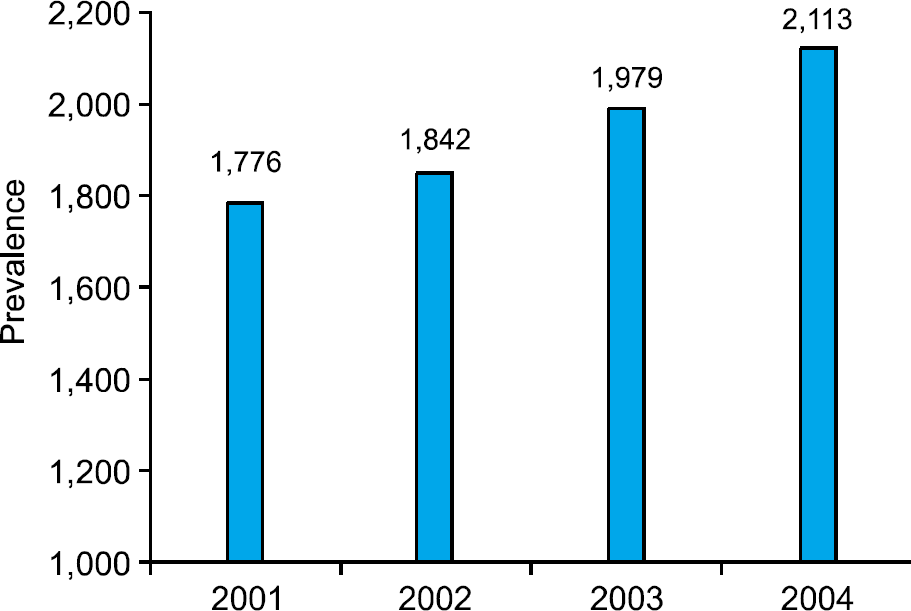
Fig. 6
Changes in mortality cases from total cancer, multiple myeloma (MM), non-Hodgkin's lymphoma (NHL) and leukemia during the last 20 years from the data of Korean National Statistics Office.
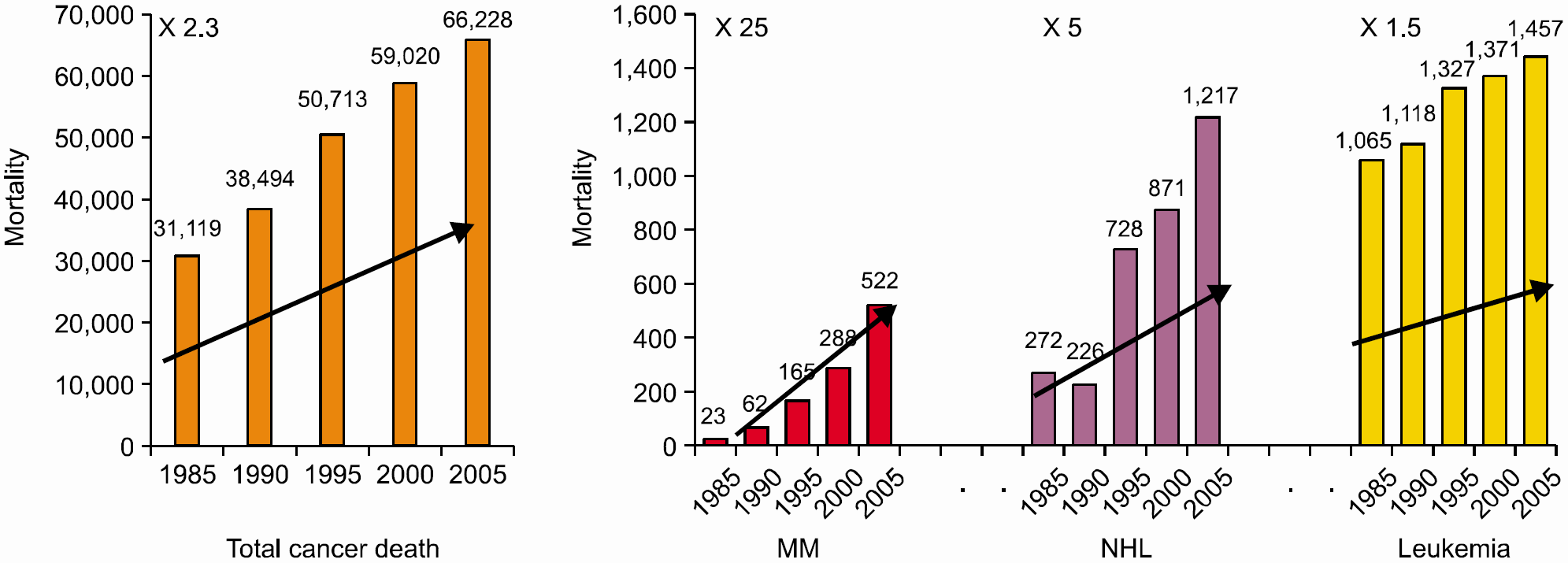
Fig. 7
Comparison of fatality rate among hematologic malignancy. Despite of recent progress, multiple myeloma still remains as an incurable disease.
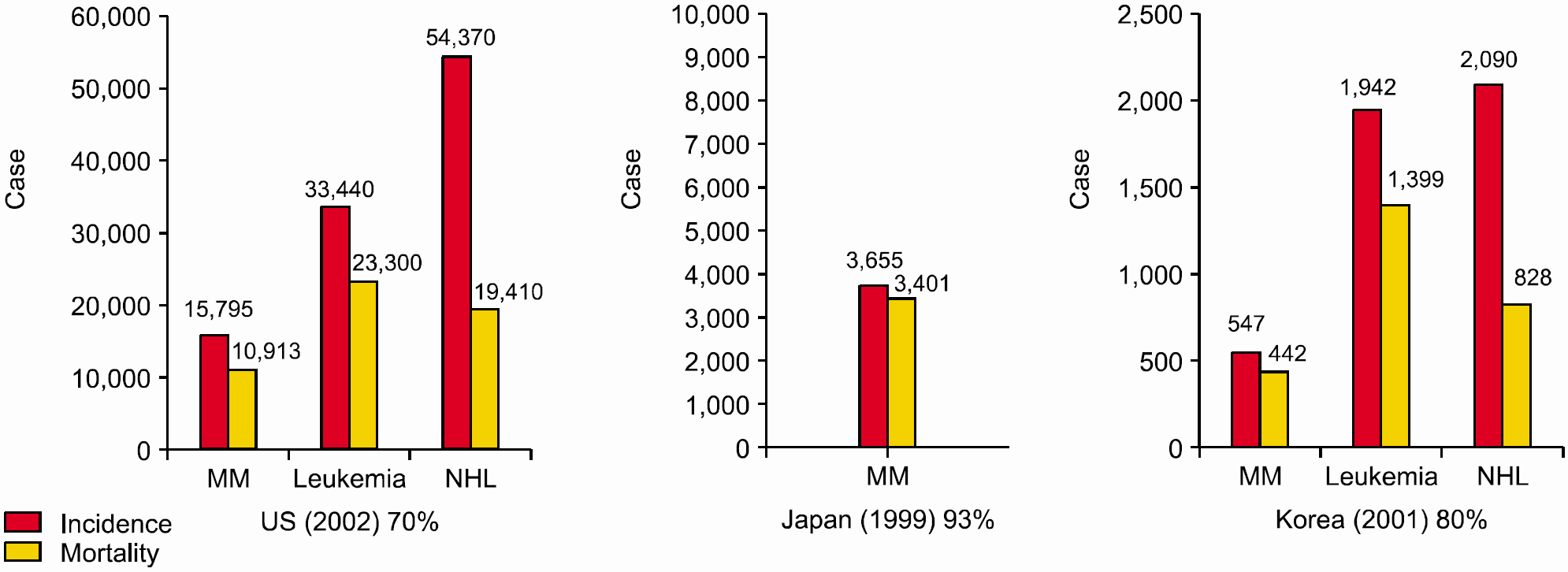
Table 1.
Comparison of epidemiological parameters in Korea, Japan, and US




 PDF
PDF ePub
ePub Citation
Citation Print
Print


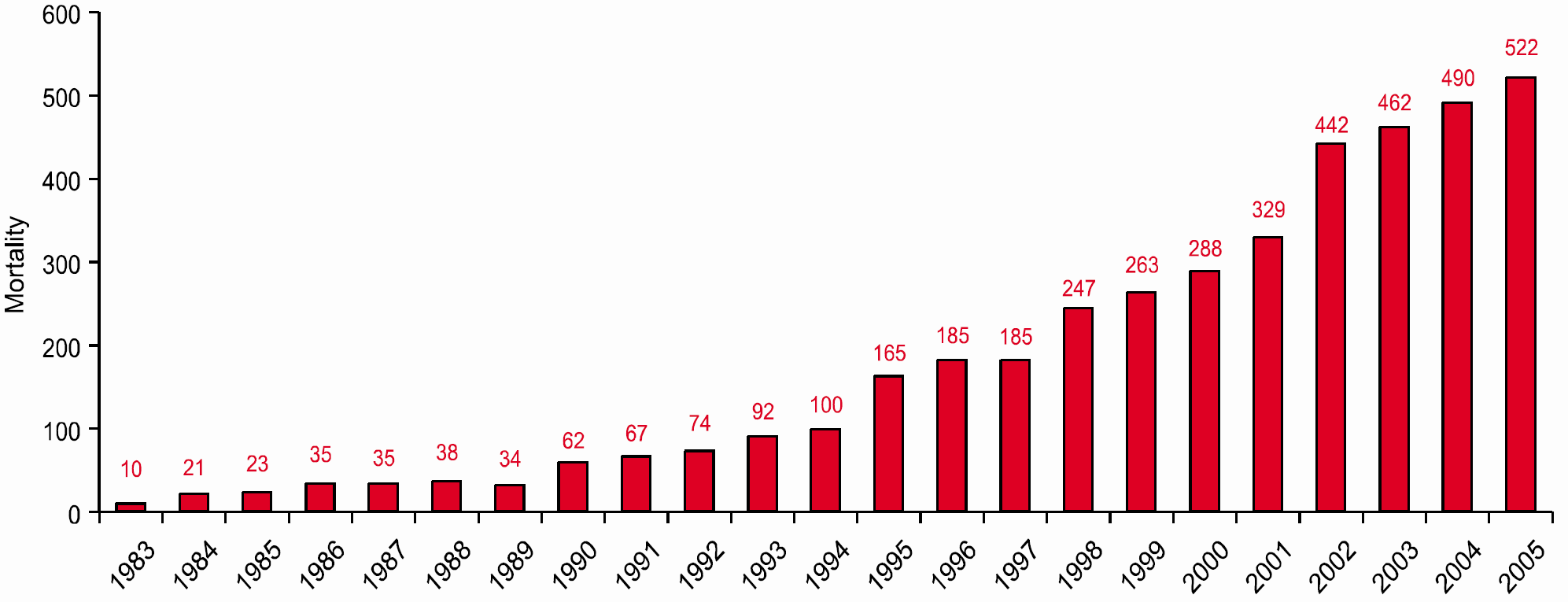
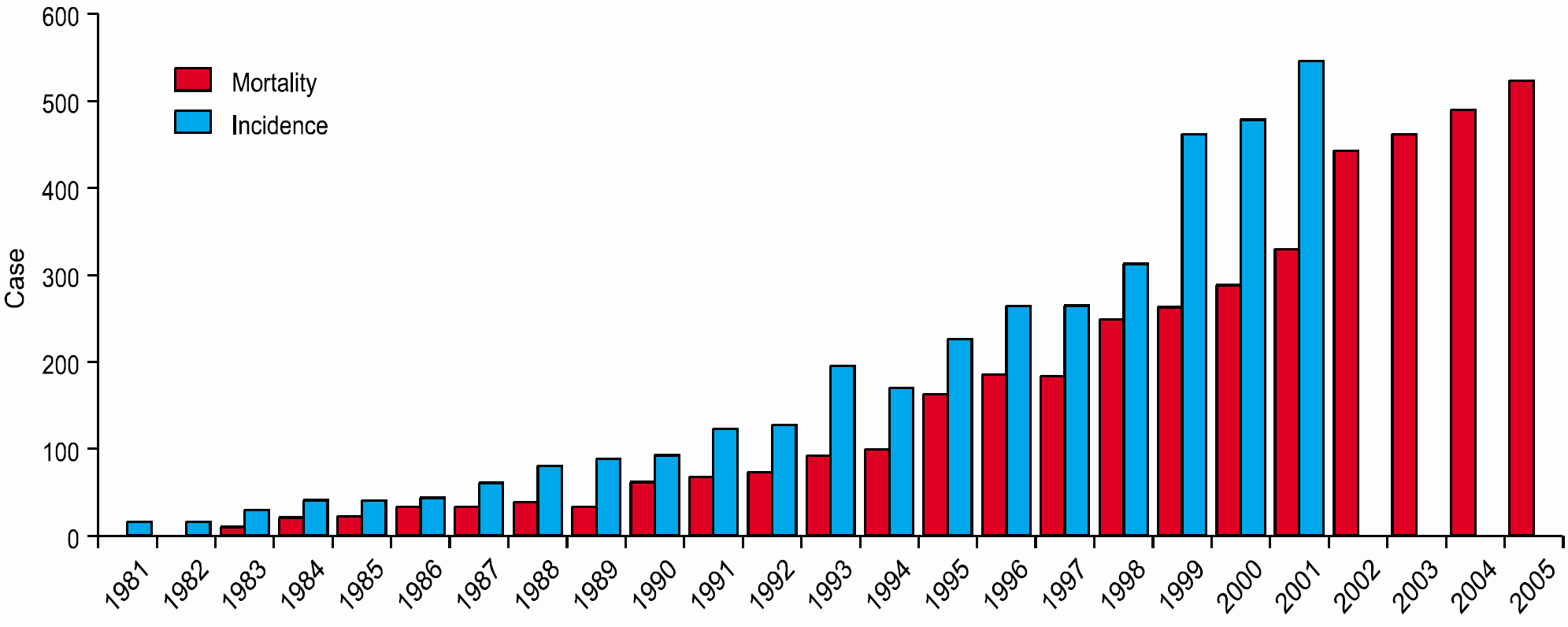
 XML Download
XML Download